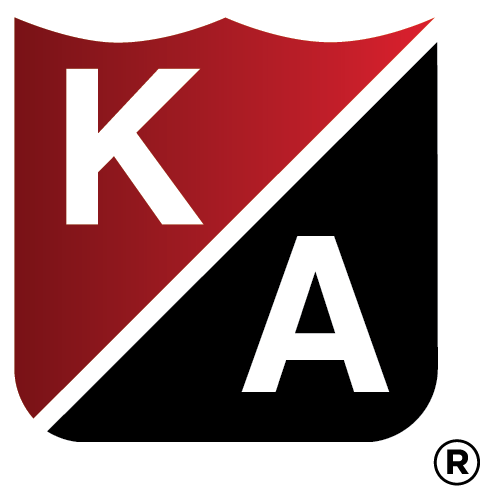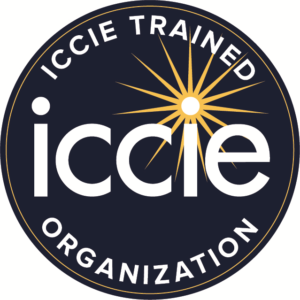The International Center for Captive Education (ICCIE) recently certified Kraus-Anderson Insurance as an ICCIE Trained organization.
Pronounced I SEE, the organization is dedicated to providing in-depth educational offerings, information on current topics, and professional designations for captive insurance professionals worldwide.
For Jean Sundlof, CIC, CPCU, CCI, ACI and Director, Captive Practice, at KA Insurance, the certification is just the latest step in KA’s commitment to this innovative form of risk management, one that goes back nearly 20 years. Here, she provides insight into ICCIE, captive insurance concepts, and the importance of working with knowledgeable advisors when navigating into this powerful, but often misunderstood, form of coverage.
Q: What is the significance of the ICCIE certification?
JEAN SUNDLOF:
ICCIE recognizes firms that have committed to educating their employees through ICCIE or hiring ICCIE educated professionals. It is an acknowledgement of commitment by the company to the captive profession and the educational achievement of its professional staff.
Q: Let’s back up a bit. In the risk management world, what is a captive? Who uses them and why?
JEAN SUNDLOF:
There are many types of captives. The structure used most frequently by our clients is membership in a group captive. Simply put, group captives are insurance companies that provide insurance to, and are controlled by, their owner-members. Because group captives are made up of best-in-class employers with superior loss experience, their owner-members are able to leave the traditional insurance marketplace to capture additional benefits, such as underwriting profits and investment and dividend income. Another benefit is that captives are better shielded from market swings, leading to more stable and predictable premiums.
Q: How has KA been a leader in advocating for captives?
JEAN SUNDLOF:
KA Insurance has been a very early advocate for group captives for qualifying businesses. I actually was the first insurance broker in the state of Minnesota to earn the ACI designation through ICCIE in 2007, followed by the CCI designation when it was introduced in 2015. In 1999 our agency joined in partnership with the oldest and largest independent captive consultant in the nation, Captive Resources. Since then we’ve grown our capabilities even as the captive industry itself has grown. So we’ve really been on the ground floor of the whole movement.
Q: And now ICCIE is extending its professional designation to organizations. What is required?
JEAN SUNDLOF: To qualify as an ICCIE Trained Organization, a firm must meet the following requirements:
At least 20% of the captive professionals in the organization must hold the Associate in Captive Insurance (ACI) in good standing; and
At least 30% of the company’s captive professionals must be ACIs, Certificate in Captive Insurance (CCI) holders, or currently enrolled in the ACI or CCI program.
The definition of a “captive professional” is someone who spends at least 20% of his or her time on captive insurance work and is either a licensed professional (attorney, accountant, actuary, insurance producer/agent, investment adviser/broker dealer, underwriter, etc.) or the equivalent to such a position. It would also apply to owners, or anyone paid by the organization to serve as an officer or director of a captive.
Q: You’ve mentioned that continuing education is an important component of ICCIE certification. Talk about that.
JEAN SUNDLOF:
Twelve hours of CEU every three years is required….Which is really necessary in order to stay on top of a rapidly changing industry, both from a tax perspective and also in terms of the innovations. The courses are online, so you are really working alongside professionals from a range of roles and from all over the world. My classmates are in Bermuda, Cayman, Isle of Man- as well as the diversity of professional disciplines- actuaries, underwriters, regulators, account managers, brokers and so on. To get all those perspectives in one “room” is invaluable.
Q: What are some of the more recent innovations in captives?
JEAN SUNDLOF:
Probably one that has gotten a lot of buzz lately is micro captives, also known as 831B exemptions.
The micro captives have sometimes gotten a bad rap, because they’ve been used inappropriately by some wealth management firms, not as risk management vehicles, but solely as tax shelters.
When used appropriately, captives are legitimate vehicles for insuring risks. The 831b election can often provide the added benefit of tax advantages. A micro captive allows our clients to customize coverage designed to enhance, complement, and integrate with their traditional insurance policies.
Q: So as with many things, captives can be used for better or worse.
JEAN SUNDLOF:
Yes, and sometimes it’s just ignorance or misperception that prevents their being used for the good. When it comes to captives, there are basically three camps: those who know nothing about them and therefore equate them as bad; those who have a little understanding of captives, and are selling them improperly; and truly knowledgeable advisors who can assess appropriate applications and counsel clients accordingly as to their options. When used appropriately, they are great vehicles for the right business.
Q: What else should employers know?
JEAN SUNDLOF:
From a benefits standpoint, group captives can also be an important tool for employee attraction and retention. My colleague, Kelly Brenna, has more from her perspective leading HR and Benefit Services at Kraus-Anderson Insurance.
Q: Ok, Kelly, give us a little background on health benefit captives.
KELLY BRENNA, SPHR, SCP, Vice President, HR and Benefit Services, Kraus-Anderson Insurance:
Health benefit captives have really become popular in last five years. KA works with a seasoned offshore health captive that has carefully underwritten its members, comprising 67 members, 27,000 total lives insured and approximately $23 million in stop loss premium. We also work with an on-shore captive health program. It is geared for mid-size companies (40-200 employees) and is less restrictive to get into than the offshore captive. Both are financially sound captives and it depends on the client’s employee base, location and appetite for risk/control as to which program will work best for them.
Q: What sort of standards are required to qualify for these captive programs?
KELLY BRENNA:
Qualifying for a health benefit captive is not nearly as rigorous as qualifying for other captives. Employers must be self-funded with their health plan. They must be committed to employee engagement including wellness. It can be a good option for an employer who has a stable workforce, who is financially sound. It really is for employers who want to get with other like-minded employers to get their health cost down while providing a good benefit program.
Q: What are the advantages of captive benefits?
KELLY BRENNA:
Employer groups get into captive benefits for additional long term cost containment. Captive health benefits are running at less than 50 percent of trend. If you have a regular group, health costs are increasing at 8 percent, the captives are at 3-4 percent. What it does is mitigate the tough years for employers because you’re sharing those losses with others vs. taking it on yourself.
Additionally, the offshore captive we work with provides dividends that can be returned to the members, so they can save in two ways: because their plan costs go down, and also through returned dividends. The onshore captive is for smaller groups of up to 200 employees; the program operates on the same premise, but they are not owners. Both offer great long term cost containment. Both captives offer participating employers the benefit of a very large pool. These are employers who want to provide good benefits for employees, but don’t want to accept 10 percent increases. They care deeply, they just don’t want to turn over the reins to their insurance program.
Q: Because qualifying for group captives comes with a rigorous performance mandate , is there any middle ground for companies that are trying to ramp up their performance?
JEAN SUNDLOF:
We find that many well-run, financially solid businesses just need a little help to become best in class in risk management. KA Insurance offers Loss Prevention and HR Consulting services, as well as a proprietary workers compensation service called COMPTROL that helps employers better manage their claims. If a captive is the right fit, we can help the business get “captive ready”.
Q: Closing thoughts?
JEAN SUNDLOF:
Group captives are a wonderful way for businesses to manage their exposures; and while the qualifications are rigorous for joining a captive, employers can also self-insure layers of risk management to incrementally move into captive benefits.




